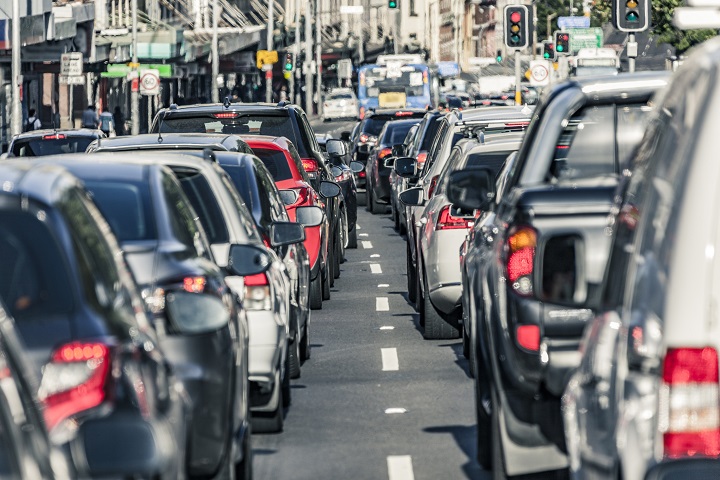
We often talk about Australia as being ‘ahead of its time’ – usually in a positive, progressive sense. But traffic reports from last month show that Sydney might have taken its progression a little too far, writes Daniel Antonello.

In February, new reports detailed that Sydney-siders had taken 93 million more trips on public transport in the last year than forecast for 2031. And public transport is just one part of the puzzle, with rideshares, increased deliveries and every new road user in between playing a part in clogging up the city.
What this speaks to is the need to be more flexible if congestion is to be eased. From changing up modes of transport in response to live traffic updates, to implementing variable shift patterns in businesses that help spread out commuters, there are lots of ways that we can better plan and react to the volume of people on our roads. And technology can be used to guide these changes.
Driven by tech
Already, patronage on Sydney’s public transport system is showing larger growth rates than that of the actual state population. In fact, our research shows that NSW’s trains and buses are the most popular in the country, indicating a shift in commuter behaviour and an increased preference for shared transport options.
But even the $55 billion that has been set aside for major federal transport projects in NSW by 2024 is now being overshadowed by immediate demand – 10 years early.
At the top, this means that we need to be pooling location data so that governments, industries and businesses can adjust their future city planning to accommodate real needs – and fast. Live location mapping can help us understand the issues at play and make informed decisions about infrastructure upgrades and regulations moving forward.
On the ground, access to real-time data empowers commuters to make more informed transport choices themselves and stay off the roads when needed. We’ve found that majority of Australians are open to changing their transport habits to relieve congestion – if they have the tools to do so.
When researching Sydney’s transport habits in 2018, we found that 25 to 34-year-olds were most likely to choose their mode of transport based on live traffic and public transport information updates. In addition, 19.5 per cent of the population has already started changing routes to avoid traffic, with 5.1 per cent starting cycling for all or part of their journey to get to work faster. And 7.9 per cent were walking to work (the country’s highest).
What these numbers suggest is that citizens are open to changing their routes if they have clear, timely and relevant information on their transport options – what is the fastest, cheapest and most convenient for them. We can enable commuters to accurately choose whether to cycle, catch public transport or use a combination of transport modes, based on real-time traffic information and any relevant disruptions to the road network.
Live location mapping shows that if you live in Ashfield or Granville, a combination of bike and public transport might be your fastest option into the Sydney CBD. Location-based technologies can even detect the speeds and traffic conditions on Australian roads, right down to helping commuters anticipate which lane of traffic to drive in to avoid the Monday morning bottleneck.
Proactivity is key to overcoming congestion
It is in our nature as human beings to adapt and evolve to our surroundings but learning to cope with overcrowding on roads and trains is not the answer, we should be finding ways to proactively overcome the problem instead.
Choosing to work from home a couple of days a month to avoid hours of commuting or even working flexible hours to reduce avoid peak times could all reduce strain on our network, especially when it’s coupled with commuters making decisions in real-time to avoid hitting bottlenecks when they do occur.
This kind of flexibility in how as well as when we travel is ultimately what is going to enable our city to continue to function, without congestion becoming a millstone around residents’ necks. This is a must given congestion impacts people’s happiness, where they choose to live, how productive they are and, as a result, the success of our economy.
Simply looking at a greater frequency of services to accommodate more people fundamentally doesn’t help the fact that our traffic stats are seriously impacting the environment, as well as our mental and physical health. By flipping our approach to zoom out and look at the overall picture of changing commuter behaviour in NSW we stand a better chance of finding ways to address the jam that will last.
It’ll take a joint effort to unsnarl Sydney, but with smart tech at hand, commuters can start making truly informed decisions about the changes they are willing to implement, while authorities evolve the commuting landscape from the data up.
Daniel Antonello is Head of Oceania at HERE Technologies
Comment below to have your say on this story.
If you have a news story or tip-off, get in touch at editorial@governmentnews.com.au.
Sign up to the Government News newsletter